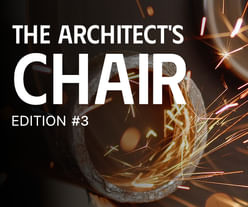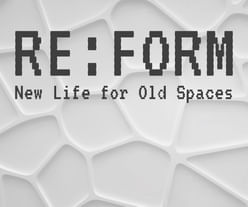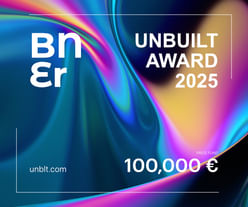
The Prix Versailles has presented its World’s Most Beautiful Museums List for 2024, celebrating outstanding designs in the culture sector.
Among the winners are Shigeru Ban's vibrant new Simose Art Museum in Hiroshima, the impressive Grand Egyptian Museum in Giza by Heneghan Peng, and the landmark ethnographic Oman Across Ages Museum from Australia's Cox Architecture.
Winners are said to "simultaneously serve creativity, the reflection of local heritage and ecological efficiency, and [...] extraordinary imprints on their environments." Each will now compete for the three available Prix Versailles 2024 World Titles that are expected to be announced in late November.
“Museums provide singular settings conducive to intercultural dialogue," Jérôme Gouadain, the Secretary General of the Prix Versailles, stated. "Bolstered by technology, they now deliver ever more immersive experiences, participate in the dissemination of knowledge and help form the tastes of their visitors. By creating the World’s Most Beautiful Museums List, we also wanted to emphasize the importance of wonder, which elevates the human gaze and allows us to be surprised."
Other World Selections winners will be announced through September. The seven Most Beautiful Museums for 2024 are:
A4 Art Museum, Chengdu, China, Tektonn Architects

Project description: "Luxehills, in the suburbs of Chengdu, is a small hillside with a unique architectural nature in that, at the turn of the millennium, its urbanisation was strictly planned, modelled after a town in Tuscany, with a country club, a church and an art museum – the A4 – standing on its heights. In one of China’s most populated cities, renovating and reorganising a museum built according to 18th century Italian plans posed an immense challenge. To match the scale of the site, the original building was divided into floors, three above ground and two below. The latter now feature impressive exhibition spaces, while the exposed floors continue to retain the welcoming, bucolic face of a Florentine square. The challenge was met by Tektonn Architects, a firm originally founded in Paris that relocated to Chengdu in 2018, which surely explains the museum’s obvious ties to the astonishing history of an area that is both picturesque and contemporary."
Grand Egyptian Museum, Giza, Egypt, Heneghan Peng Architects

Project description: "In the vast atrium of the Grand Egyptian Museum, Pharaoh Ramses seems to be welcoming visitors into the twists and turns of time. It matters little to the divine king that it took 20 years to build this new palace – the firm Heneghan Peng Architects having won the competition in 2003 – since Ramses has the entire past and future in front of him here. Ancient Egyptians used the fourth dimension in their design to ensure the sun would face the king, and now they illuminate the entrance by common agreement. After admiring incredible riches, climbing the grand staircase and arriving on the top floor, at the edge of the Giza Plateau, visitors discover the impressive sight of the three pyramids of Khufu, Khafre and Menkaure. They can then appreciate that, 'from the heights of these pyramids' – and in this museum – '40 centuries of history look down upon' them."
Smritivan Earthquake Museum, Bhuj, India, Rajeev Kathpalia

Project description: "Natural catastrophes do not discriminate based on age, sex or religion. And so it was for the 12,932 victims of the 7.6 magnitude earthquake in Smritivan, in the state of Gujarat. Nor do the memorial and museum, designed by architect Rajeev Kathpalia, make any such distinctions, with 12,932 trees planted on the 800,000 m² site, irrigated thanks to the construction of 50 check-dam reservoirs on which 12,932 names are engraved. In this devastated, arid land, there is now a luxuriant forest forming the backdrop for a museum inspired by local architecture and the ruins of the fortress overlooking the site. A winding path connects the different galleries running up an incline, underscoring both the drama of the terrible tragedy and the peace that comes from renaturalisation. Smritivan is a tribute to resilience which has become a pilgrimage destination and a place of refuge for anyone seeking comfort in nature."
Simose Art Museum, Hiroshima, Japan, Shigeru Ban Architects

Project description: "Back in 2002, for Expo.02 in Murten, Switzerland, the architect Jean Nouvel, 2008 winner of the Pritzker Architecture Prize, first imagined a temporary monolith weighing nearly 4,000 tonnes yet appearing to buoyantly float on the surface of the lake. A space odyssey! What was dreamt up by the one was later magnified by another, Shigeru Ban, 2014 Pritzker Prize winner, at the Simose Art Museum, in the form of eight mobile galleries with walls made of coloured glass that light up at night over the water of a reflecting pool. This symbolic scenery amplifies the physical scenery of the Seto Inland Sea with a nod to the beauty of the Setouchi Islands. The structure blends with the garden of seasonal plants and flowers which served as motifs for the French artist and designer Emile Gallé (1846-1904), whose work makes up a significant portion of the museum’s collections. Despite the concept’s hefty ambitions, visitors are greeted by a canopy on a welcoming scale."
Paleis Het Loo, Apeldoorn, Netherlands, KAAN Architecten


Project description: "The extension of Paleis Het Loo, one of the country’s most renowned and most popular museums, drew its inspiration from the proportions of the Baroque palace and its historical environment. Built in 1686 as a royal hunting palace, it later became the residence of Stadholder-King William III and his wife Mary Stuart. To establish a balance between old and new, a monumental extension bathed in natural light was built under the forecourt. This is where the artistry of KAAN Architecten came into place, having had the intuition to pay homage to the hydraulic systems employed by the palace’s historic gardens by creating new, shallow ponds that, in addition to reflecting the monumental palace, would allow daylight to enter, creating a radiant effect down below. This design transformed the grand foyer into the beating heart of an elegant, understated edifice, in keeping with the lavish image associated with a palace."
Oman Across Ages Museum, Manah, Oman, Cox Architecture

Project description: "Drawing from 800 million years of geological history, the Sultanate of Oman has taken a grandiose new step that is a must-try experience. Located at the gateway to the desert, 160 kilometres from Muscat, the town of Manah is rich in monumental citadels dating back to the 18th century. Those fortresses bear witness to the country’s longstanding interest in architecture and technology. With the extraordinary scenery of the Hajar Mountains looming on the horizon, the towering spike of the new museum, Oman Across Ages, designed by Cox Architecture, reflects the beauty and power of those 'secret mountains' whose peaks rise 2,000 metres into the air. This seminal structure lets travellers know that a new destination awaits them there, in the arid landscape, and that a welcoming, contemporary oasis, offering protection from the elements, now showcases an age-old culture in an ode to Omani engineering."
Polish History Museum, Warsaw, Poland, WXCA

Project description: "The mission of this history museum is subtly etched into the outer walls of this monolith of stone. Located in the Warsaw Citadel, next to the Polish Army Museum and the Katyn Museum, the site is even more closely tied to the country’s history given that it is part of one of the biggest and most modern museum complexes in all of Europe. The architectural firm WXCA’s idea was to cover the façades with slabs of marble arranged in horizontal strips to underscore the layered structure of the stone, making it possible to add diversity to the different sections through variations in tone and texture. The relief of this bold layout, which even leans into the abstract at points, is a reference to the history of Poland through a selection of symbols of its architecture, from the Middle Ages to the modern era of the 20th century."

The Architect's Chair / Edition #3
Register by Wed, Jan 15, 2025
Submit by Tue, Feb 18, 2025

Kinderspace: Architecture for Children's Development #2
Register by Thu, Jan 16, 2025
Submit by Mon, Jun 16, 2025

Re:Form – New Life for Old Spaces
Register by Wed, Jan 22, 2025
Submit by Tue, Sep 2, 2025

100,000 € Prize / Buildner's Unbuilt Award 2025
Register by Thu, Oct 30, 2025
Submit by Thu, Nov 20, 2025
1 Comment
There is exercise and there is dance. To quote Poincare (sp): The gamboling of lambs, no matter how delightful, is not dance.